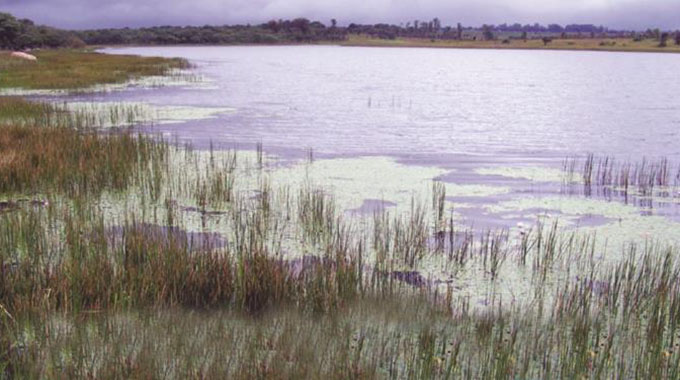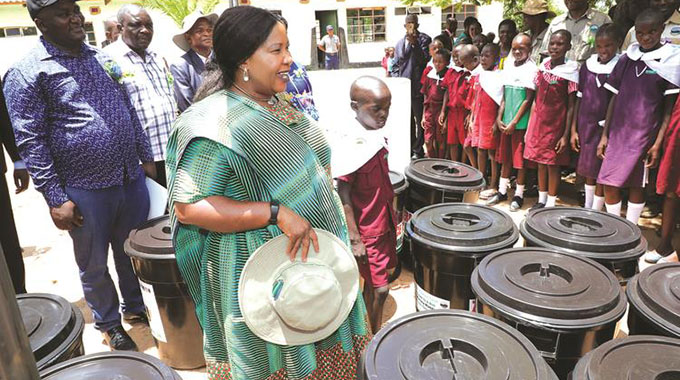Harare needs Wetland City status

Edgar Gweshe Correspondent
Harare is running dry due to the continued plunder of wetlands — which are the second source of water for the capital after run- off — and there seems to be consensus among stakeholders that there is urgent need to protect our water sources from further destruction.
So huge has been the plunder of wetlands in Harare that President Mnangagwa has added his voice to calls to protect wetlands as water sources.
Urban agriculture, construction as well as corruption/abuse of power have been among the major contributory factors to the invasion and destruction of wetlands in Harare.
Many structures have been built on wetlands which have been lost at an amazing rate by each day.
Many boreholes have dried up and drilling has become more expensive as the water table has gone down to over 60 metres.
Gone are the days when a borehole driller could water at 20 metres or so.
The Zimbabwe National Water Authority (ZINWA) has raised the red flag over Harare’s water table which has gone drastically low due to the plunder of wetlands.
Despite numerous calls, assurances/commitments to protect wetlands, the plunder of the water sources is apparently going on unabated.
This is happening despite legislation (which, however, needs amendment) to protect the water sources.
This article will focus on one important tool that Harare can embrace in protecting wetlands — Wetland City Accreditation (WCA).
Wetland City Accreditation (WCA) is a tool developed in 2015 under the Ramsar Convention to assist signatories to promote the conservation and wise use of urban wetlands.
The convention was adopted in 1971 at a meeting held in the Iranian city of Ramsar after which it was named.
It is one of the earliest and most widely adopted international conservation agreements, with a specific focus on the conservation of wetlands.
Zimbabwe became a signatory to the Ramsar Convention in 2013, at which time it identified and designated seven sites as wetlands of international importance, these being Victoria Falls National Park, Mana Pools National Park, Chinhoyi Caves Recreational Park, Driefontein Grasslands, Lakes Chivero and Manyame, Cleveland Dam and Monavale Wetland.
Signatories can apply to the Ramsar Secretariat for one or more cities to be recognised as wetland cities “for cases in which a city has a particularly strong and positive relationship with wetlands”.
So far, an initial 18 cities from seven countries have been officially recognised as wetland cities, including two from Africa (Ghar el Melh in Tunisia and Mitsingo in Madagascar), with the others being in China, France, Hungary, South Korea and Sri Lanka.
WCA promotes the wise use of wetlands as a basis for sustainable development and provides positive branding opportunities and assists in attracting additional funding to support wetland programmes.
With wetlands being among the major water sources for Harare, Zimbabwe’s capital is an ideal and excellent candidate.
The Harare Wetlands Trust (HWT) is seeking to work together with and provide support to the City of Harare, the Environmental Management Agency (EMA), the Ministry of Environment, Climate, Tourism and Hospitality Industry and other interested stakeholders to develop and submit an application to the Ramsar Secretariat for wetland city accreditation for Harare.
Ramsar invites and reviews such applications on a three-year cycle.
The intention is to submit an application for Harare by the middle of March 2020, this being the closing date for the present cycle of applications.
Some of the main features of the WCA framework are that:
It is intended for contracting parties committed to the wise use of all wetlands in their territory and to maintaining the ecological character of Ramsar Sites.
It is intended for cities located close to Ramsar Sites and/or other significant wetlands.
It provides an incentive system for cities and local communities to establish a positive relation with constituent wetland ecosystems.
It aims to provide an opportunity for cities that value their natural or human-made wetlands to gain international recognition and positive publicity for their efforts.
It acknowledges the importance of local authorities in valuing and conserving wetlands, as well as the benefits provided by wetlands for local populations.
Harare as a Candidate City
Harare appears to fulfil the stipulated criteria for WCA. The city has two Ramsar Sites, namely Cleveland Dam and Monavale Wetland, and is located immediately upstream of and directly impacts on the Lake Chivero and Manyame Ramsar Site. Furthermore, the city has an extensive network of headwater wetlands that are critical to water provisioning for the city.
Way Forward
The way forward is clearly laid out in the supporting materials provided by the Ramsar Secretariat. The next steps are to:
Complete the WCA nomination form.
For the City of Harare to check and endorse the completed form.
For EMA, as the National Focal Point, to again check and endorse the completed form.
For EMA to submit the completed nomination form to the Ramsar Secretariat by 20 March 2020.
The sustainable future of Harare depends on the protection of our wetlands.
For Harare, wetlands mean water hence, “No Wetlands, No Water.”
Edgar Gweshe is the Communications Officer for Harare Wetlands Trust. He can be contacted on [email protected] <mailto:[email protected]>








Comments